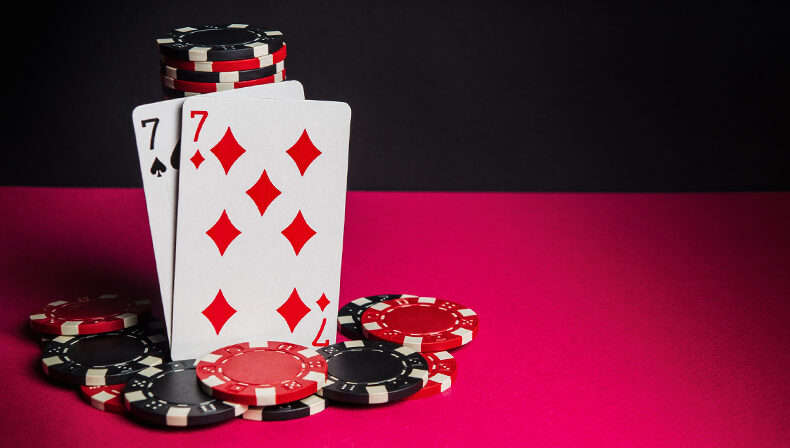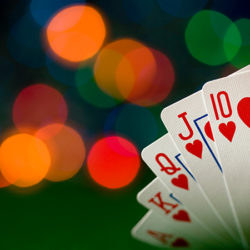
In poker, being able to update your assessment of a situation based on new information is vital. For example, in a game of Texas Hold’em, having a good understanding of what your opponent would do with different hands on the flop in can help your decision-making on the turn. If there were two hearts on the flop and you believe that your opponent would most likely bet with a flush draw and your opponent checks – you can now act on the turn with the knowledge that your opponent will likely not have a flush even if a third heart arrives.
Using the game of 7-card stud (hi), let’s explore this concept with an example.
7-card stud is played with each player receiving two hidden ‘hole cards’ face-down as well as one face-up card to start. Then, one round of betting occurs before each player (who is still in the hand) is dealt another face-up card. That process repeats twice more, before each player receives one final, seventh card, face-down, and a final round of betting occurs. The game is usually played with an ante from everyone as well as a bring-in (a small forced bet which is paid by the worst starting face-up card).
With six players in the game, the first player folds (Th), the second player folds (4d), the third player (player A) raises to one bet (7c). The fourth player is showing Qd, the fifth player is showing Kh and the sixth player (the bring-in) is showing 2c.
Suppose you believe that player A plays a certain range – meaning a certain set of three-card combinations of hands. Suppose that range consists of the following types of hands only: three of a kind, every split pair (meaning a pair of sevens and any other card), every wired pair (meaning any pair that is not sevens) and every three-to-a-flush (or three-flush for short). For simplicity, assume that given that the player chooses to play, they play all of their hands the same way (by raising to one bet) and ignore the possibility of them just calling the small bring-in bet. Also, assume all unknown hidden cards are random.
How many combinations of hands does player A have, given that they raised?
How many of those combinations are split pairs?
The action continues with the fourth player folding, the fifth player (player B) raises to two bets, the bring-in folds (2c) and player A calls.
Suppose player A always calls this raise to two bets and never folds. Next, both players get another face-up card each (called fourth street). Player A gets 3s and player B gets 7d. Here, new information is revealed. For simplicity, assume player B’s hidden cards are random and unknown to you.
How many combinations of hands does player A have now?
How many of those combinations are split pairs?
Hint: Looking back at your answers, you should find that the proportion of the range that is made up of split pairs goes down by just about 10 percentage points!
Working through these questions, you notice how new information changes the state of the world and forces you to update your beliefs about what a range of poker hands looks like. Similarly, in trading, we are constantly incorporating new information about the world and questioning our assumptions to better model the world going forward.




Subscribe Now
Get each new post sent straight to your inbox